When you cycle in Europe, you usually have a pretty good idea of what to expect.
You know what cols you'd like to tackle or which tracks lie in wait, what kind of cuisine you'll enjoy, the best way to travel and the level of hospitality you can anticipate receiving. There are cycling-friendly hubs such as Majorca, Girona and Morzine, and you can rely on the infrastructure – from bike shops to cycling-friendly hotels and cafes.
But you can forget all of that when you go to Sri Lanka.
I’d been invited by Sri Lankan Airlines and its subsidiary Sri Lankan Holidays for a week of bikepacking across the island from coast to coast.
It’s no great secret that Sri Lanka has faced some turbulent times, from civil war to economic crisis. However, now the country is in a much more stable position, Sri Lankans are keen to welcome tourists back.
The airline and holiday group had assembled a team to showcase what Sri Lanka can offer cyclists, both on and off the bike, and tasked Surrey-based Suranjan Cooray with gathering a group of like-minded riders and journalists.
I was going to be part of an impressive peloton. There were two former pros, The Cyclist's Alliance founder Iris Slappendel and renowned cycling photographer Michael Blann. We were joined by current and former cycling guides Ali Gibb and Olly Townsend, cycling coach and Internationelles rider Helen Bridgman, and endurance specialists Gaby Thompson and Chris Hall.
Before setting off, our planned bikepacking trip changed to around 450 kilometres on road and gravel. There would be a few bus transfers and luxury hotels in between stages to squeeze as many of Sri Lanka's finest sites into the shortest trip possible.
Even though the riding plans had changed, I knew I’d still have my work cut out. I hadn’t completed a 100km ride in over a year and I was headed for heat, humidity and the Sri Lankan mountains.
Cross, Gravel, Road

“A standard gravel bike will do”, read the briefing document when I was first introduced to the idea of riding in Sri Lanka.
I laughed a little at that because there isn’t really such a thing as a ‘standard’ gravel bike, but I understood what was implied.
When thinking about which bike to take on the trip, I had a lightbulb moment. I’d recently finished testing for the BikeRadar Women’s Road Bike of the Year category, and the Ribble CGR Ti Enthusiast had been a close runner-up.
‘CGR’ stands for Cross, Gravel, Road – and the bike is designed with versatility in mind. It has a drop handlebar, wide tyre clearance and a more relaxed geometry with a longer wheelbase than most endurance road bikes.
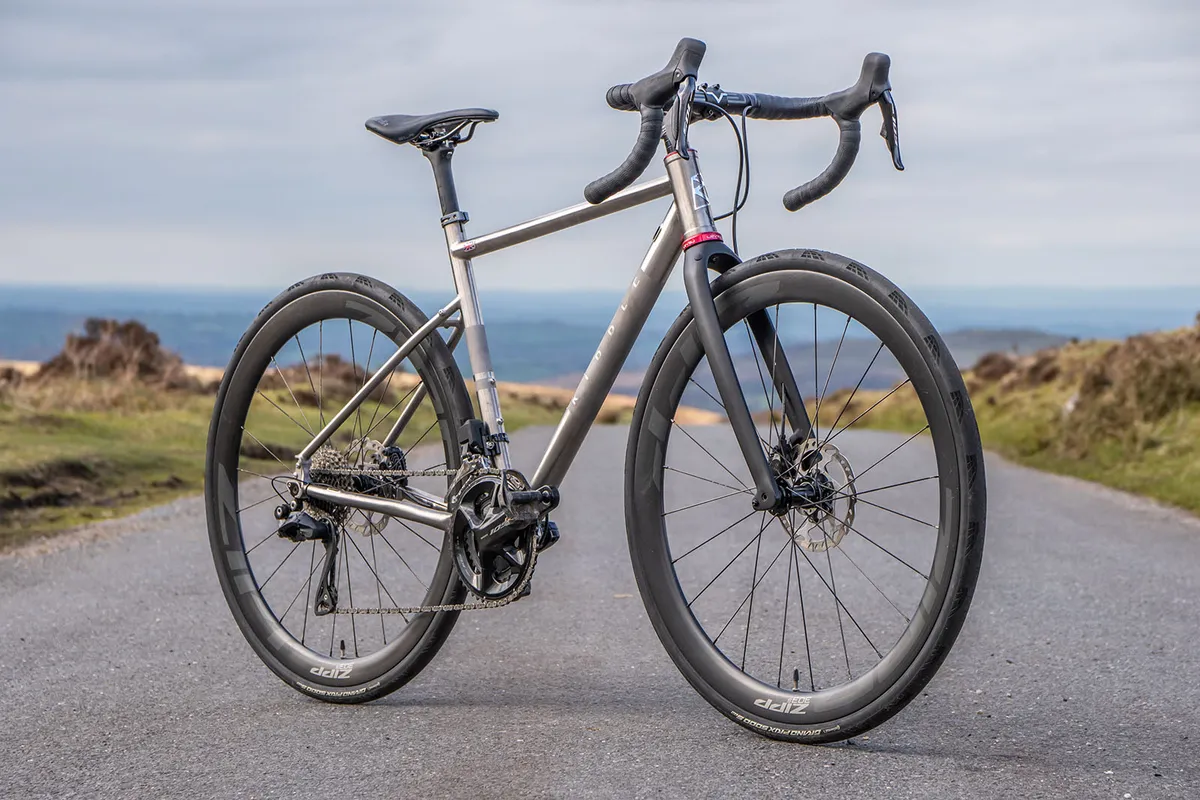
The CGR had excelled in testing, coming second to the value package offered by the Scott Contessa Addict 25. The Sri Lanka trip seemed an ideal chance to test how versatile the bike really is.
A tyre change would be simple enough. I’d already earmarked the excellent Schwalbe G-One Overland tyres that I’d reviewed for the CGR’s gravel glow-up, but gearing would prove more problematic. Kitted out with 12-speed Shimano 105 Di2 R7100, the CGR would require a total groupset overhaul if I wanted easier gearing for the steep Sri Lankan climbs.
Ribble pulled through and sent over a duplicate bike kitted out with Shimano GRX RX800 in my stipulated 1x configuration, with a 40T chainring and 11-42t cassette.
I’d just need to switch the upgraded Zipp 303s wheels over from the original bike to replace the 650b wheels and fit the tyres to be gravel-ready. Or that’s what I’d thought.
What I’d overlooked in my last-minute dash to get everything ready was cross-compatibility. 12-speed Micro Spline freehubs and 11-speed groupsets don’t play ball.
It's perhaps something that’ll be sorted with a 12-speed GRX RX820 release on the cards, but it's no good to me now.
Instead, I fitted the Overland tyres to my trusty WTB CZR i23 carbon wheels, which weren’t quite as flashy as the Zipps but still looked great.
In the spirit of being sensible, I took the gravel-ready CGR out for a test spin on my local Dartmoor byways, bridleways and singletrack before packing it down and jetting off.
After the initial fit niggles were fixed, including adjusting the reach and switching out saddles, I was happy with the new rig.
Rusty red Sri Lankan gravel
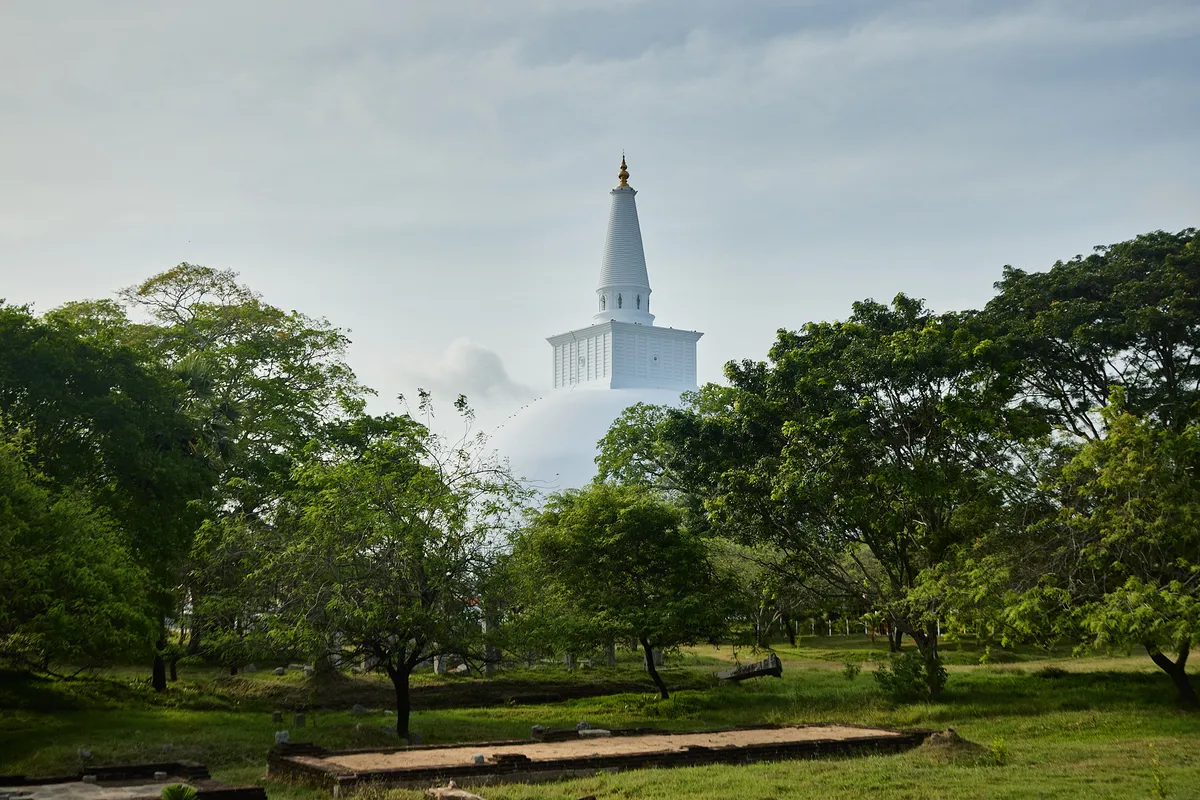
Once I arrived in Sri Lanka, we spent the first two days of the trip riding through coastal plains and into the ‘cultural triangle’, which links important Buddhist pilgrimage sites in Anuradhapura, Sigiriya and Kandy.
On the first day, we soon peeled off the smooth coast road and headed inland on rusty red back streets.
The contrast was staggering. On the coast, the tarmac roads were smooth and free from potholes. But as soon as we turned off the main roads, we were on red, sandy dirt tracks. Some were smooth and flat, others resembling pump tracks. Only a single lane wide and often bordered by tall grasses and houses, these were a total blast.
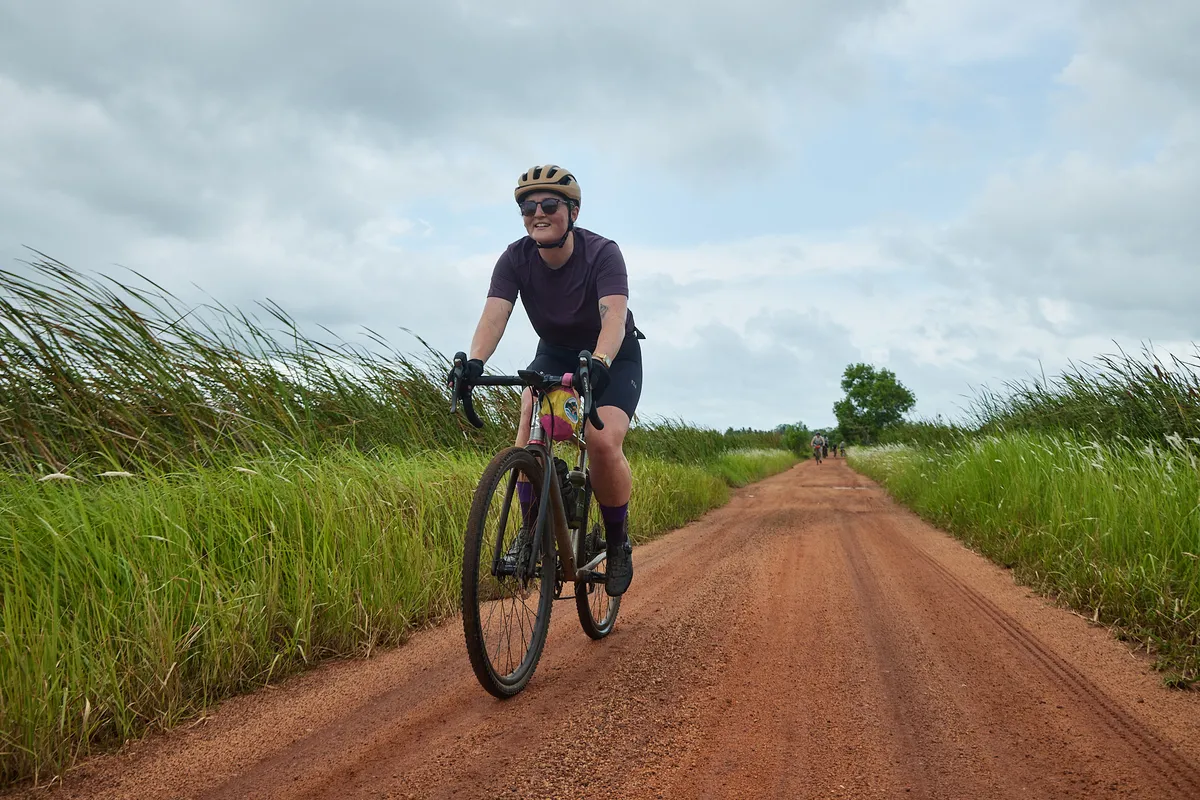
Refuelling came in the form of roadside stops, either with fresh watermelon, papaya and pineapple slices sequestered from the support van, fresh king coconuts sliced open for us to enjoy in the coconut plantations, or a visit to one of the many roadside shacks. These offered a range of snacks from homemade cakes, string hoppers filled with coconut and treacle or hot, fresh roti and chilli sauce, called ‘dynamite’.

Taking things up a notch
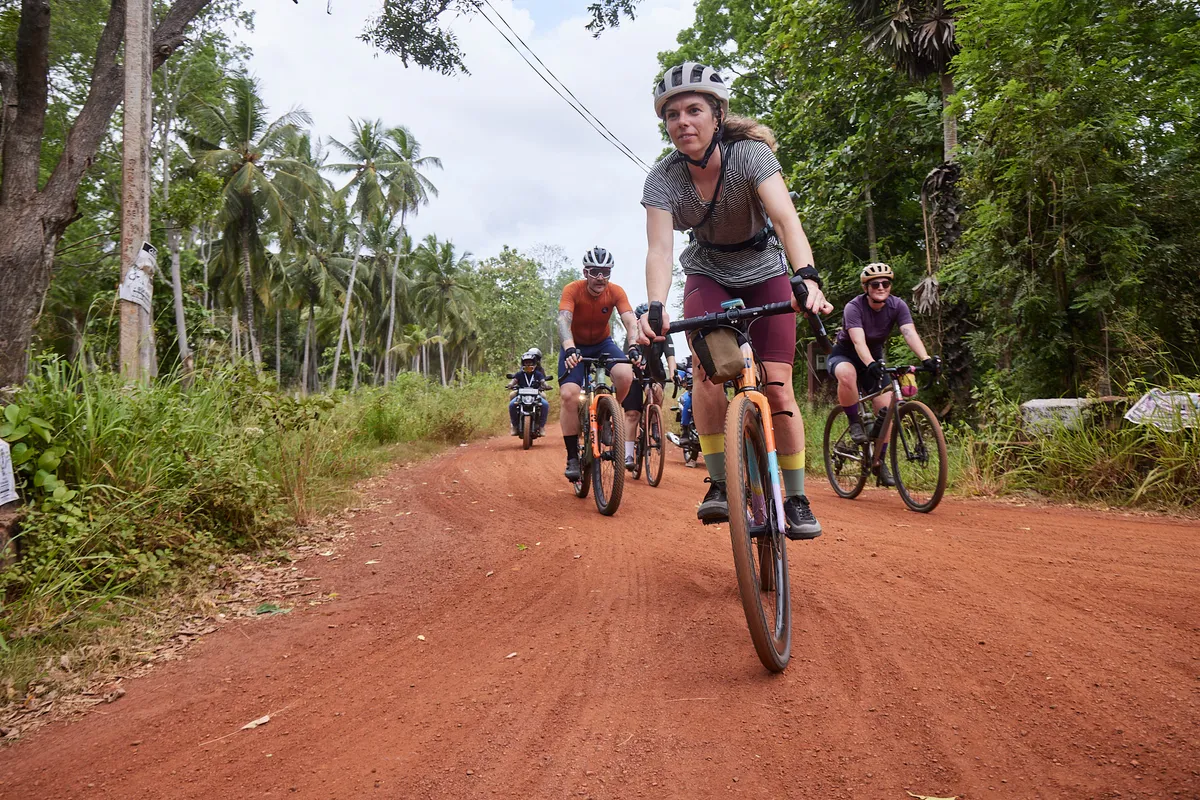
The first two days helped us acclimatise to the heat, humidity, the way the roads operated and riding together as a group, which was almost seamless. I often wondered if I was actually on a Spanish training camp. For the first time in quite a while, I was riding in a large group of trusted riders on flowing roads, with everyone taking turns on the front.
On the third day, it was time to head into the mountains. Even though we headed off soon after 7 am, we knew we’d start climbing in the Knuckles Range during the hottest point of the day.
The anticipation built through the first 64km of the ride, which was pretty flat, but on an unfinished road. The bedrock had been laid, but there was no tarmac. Our guides were nervous about us getting across it, but it proved to be nothing less than fantastic. Stony, wide and fast, we paced along it overtaking trucks and tuk-tuks while drivers looked on in disbelief.

Our ascent into the Knuckles Range was preceded by a shorter climb on a very wide, dusty and steep gravel road with no shade. If we were nervous about what was coming up before, we were now even more apprehensive, because the heat at this slower pace seemed to be almost unbearable.
From the side of the Kaluganga Reservoir, we began our ascent proper. Totalling 18 kilometres up to the Riverston Pass, there was a short descent about a third of the way up. We each tried to settle into our respective rhythms as the road ramped up into short but cruelly steep sections. I soon lost sight of the rest of the crew.
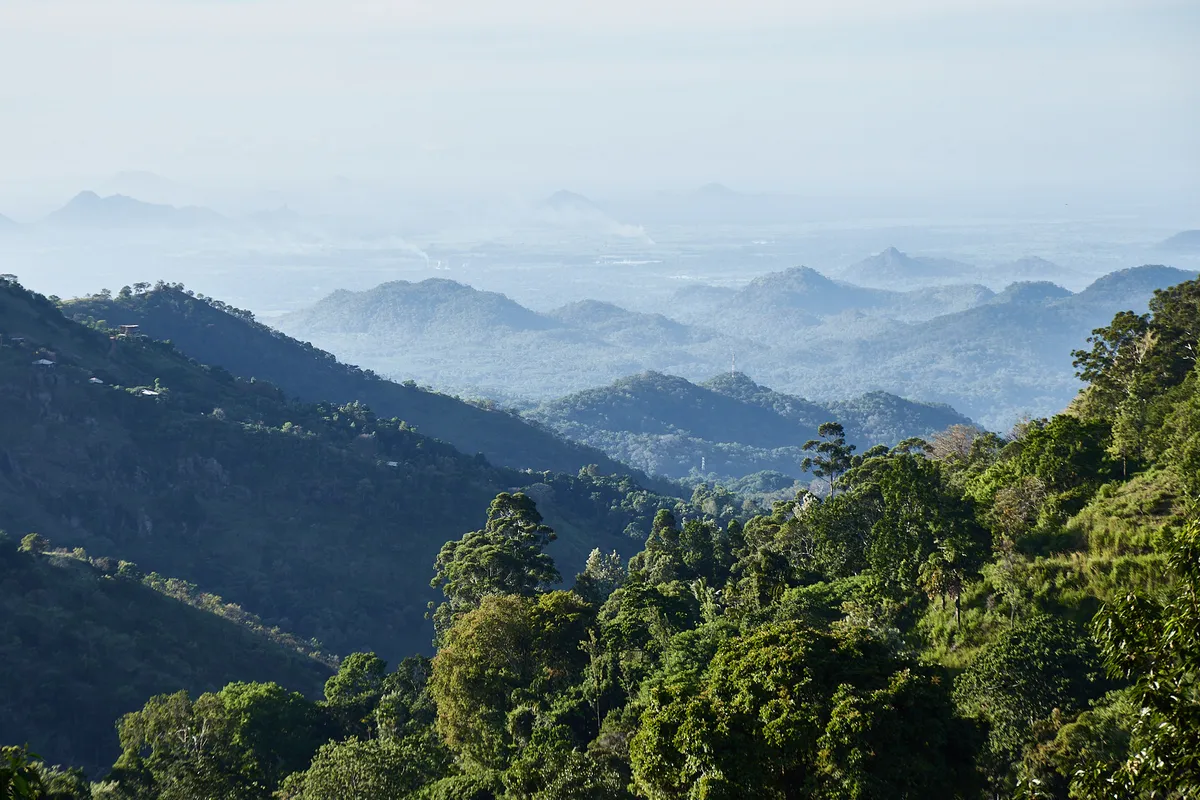
Despite the broken tarmac and savage pitches, the saving grace was that the road was now mostly under the shade of the canopy. Criss-crossing over the road lessened the gradient and helped me seek shade and avoid the worst of the potholes.
I was glad I’d opted to switch to the GRX gravel groupset for the extra gearing, but wished I’d gone for a smaller aftermarket chainring or opted for something such as the Wolf Tooth RoadLink to allow a larger cassette.
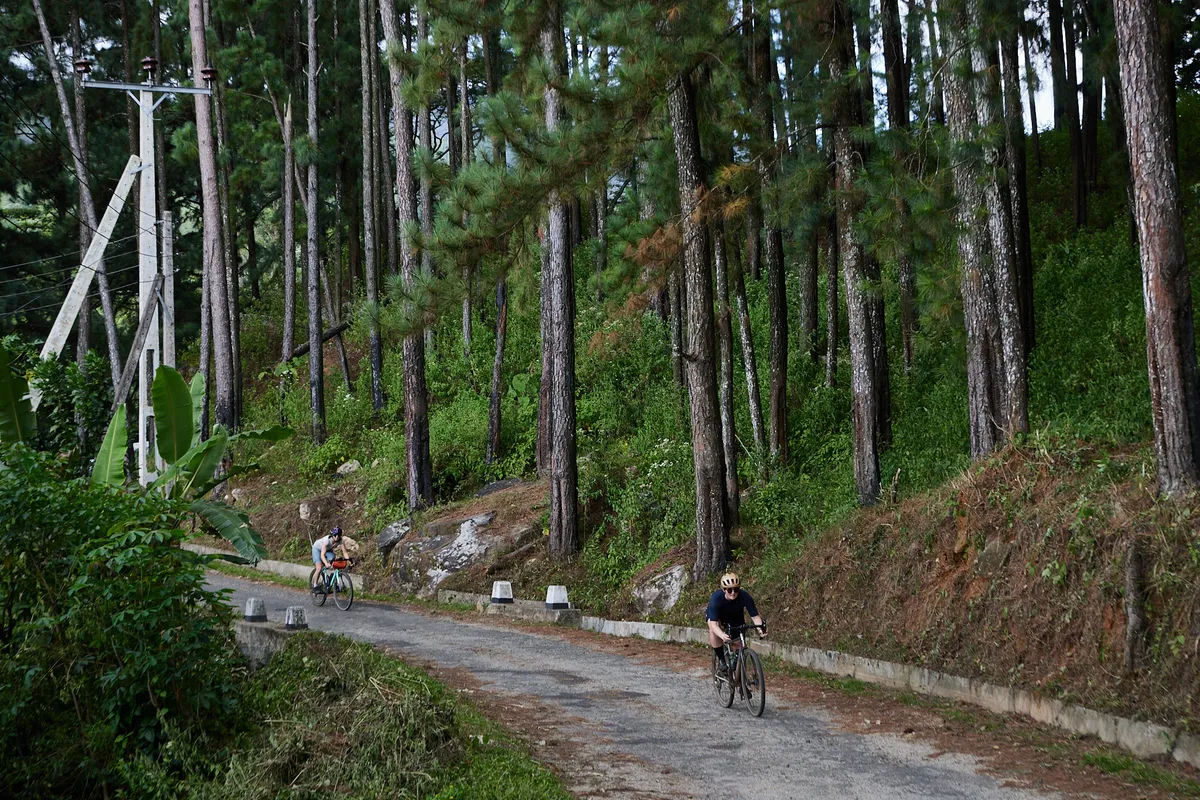
I felt determined to see the climb through up to the pass, but the midday heat and the growing pain in my lower back from the intense effort made me question whether I’d be able to.
As I reached a section where people were out patching the road, I chuckled to myself. Tar and loose gravel were laid across shorter sections of the rough surface. As I passed, nodding, smiling (grimacing) and saying hello, they seemed to smile in disbelief that we would be mad enough to consider cycling up here.
The tiny banana I’d stowed in my pocket kept me going to the first peak, a third of the way up. As planned, I paused briefly to force it down. Eating in these temperatures is hard but necessary.

I then navigated the rough descent to the river. It was like a dream come true when I heard the voices of the other riders calling. Most were standing calf-deep in the river, cooling off.
I’m a huge fan of a mid-ride dip, and with such scorching temperatures, I whipped off my jersey and plunged straight in, bibs and all. Suranjan brought over bottles of cola and freshly cooked roti while the friendly stray dogs smiled hello and wagged their tails. It was heaven on earth.
11km to go
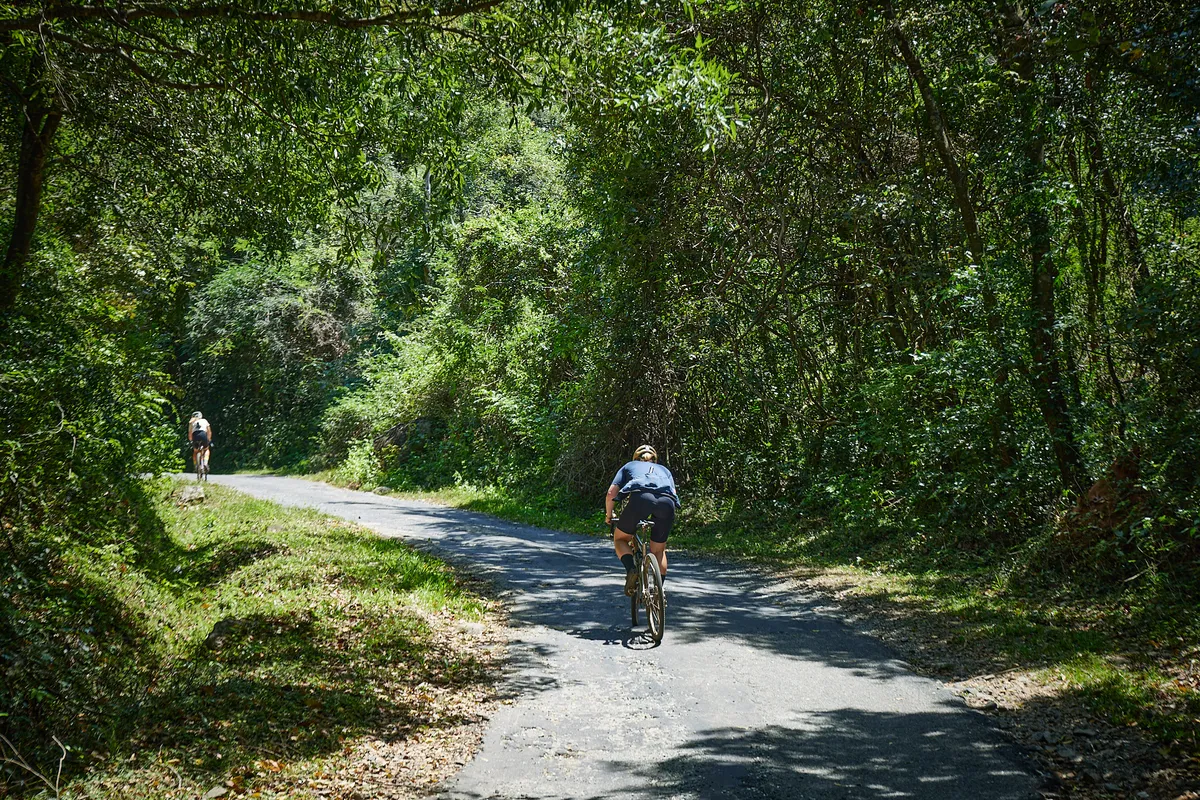
Once fuelled and reset, we continued up into the jungle with 11km to go. I set off first to get a little head start – a tactic I’d repeat each time we paused for a viewpoint. Gaining elevation quickly on the steep ramps, we were now being graced by expansive mountain views every few kilometres.
The chorus of cicadas as we cycled up through the jungle was almost deafening and I declared them to be part of my own ‘invisible peloton’, to borrow ultra-endurance cyclist Emily Chappell’s phrase.
The higher up we got, the more assured I became that I’d be able to make it to the top and the stronger that made my legs feel. By the last few steep switchbacks, I was pushing on, elated and beaming.
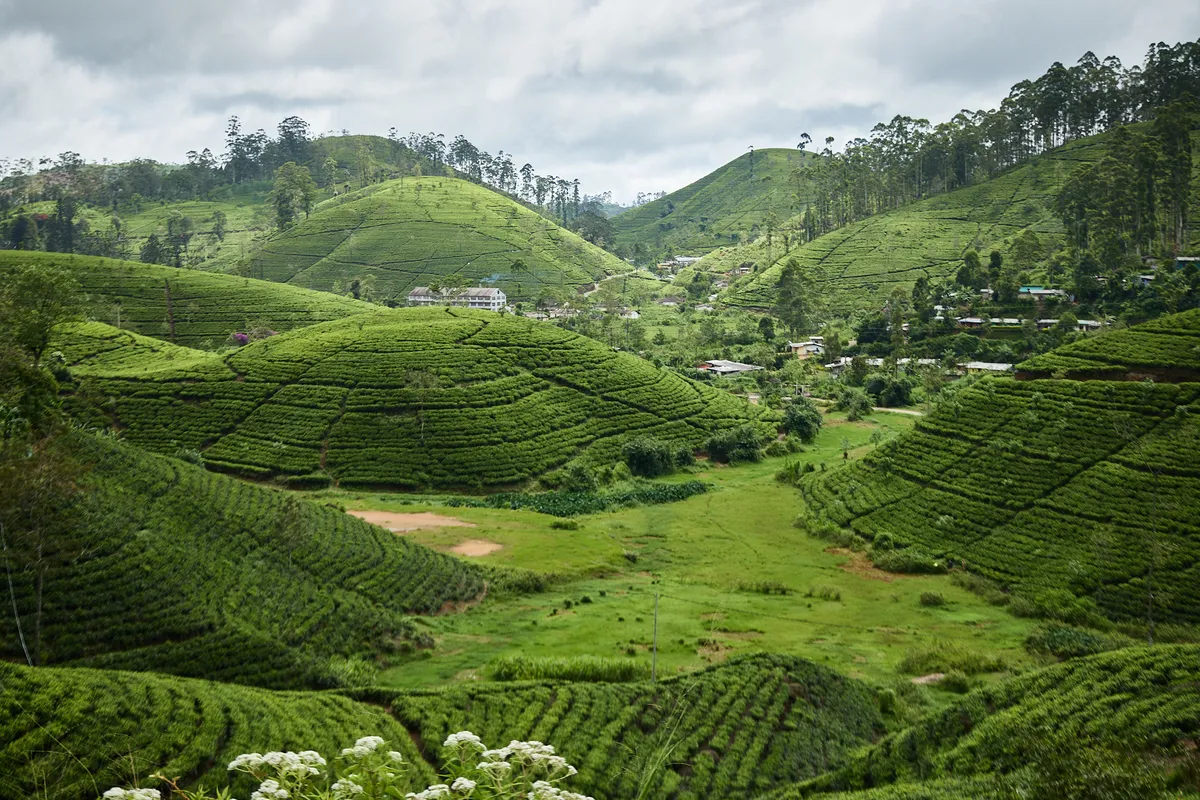
I often feel there is a problem with the emphasis on suffering in cycling, but this experience turned that on its head a little. I certainly had suffered – particularly in those early few kilometres – but making it to the top despite the odds had given me untold joy that’s hard to match. Several of my fellow riders admitted it was one of the hardest climbs they’d ridden, if not the hardest, which only boosted my ego.
Crossing the watershed was like crossing into a different country. We descended to the east through terraces of tea plantations, past palms and pines and into countryside like the jungles I’d seen on TV. Houseplants that I’d spent years trying to make happy were thriving here, rich, lush and flourishing, lining the roads.
Back down to earth
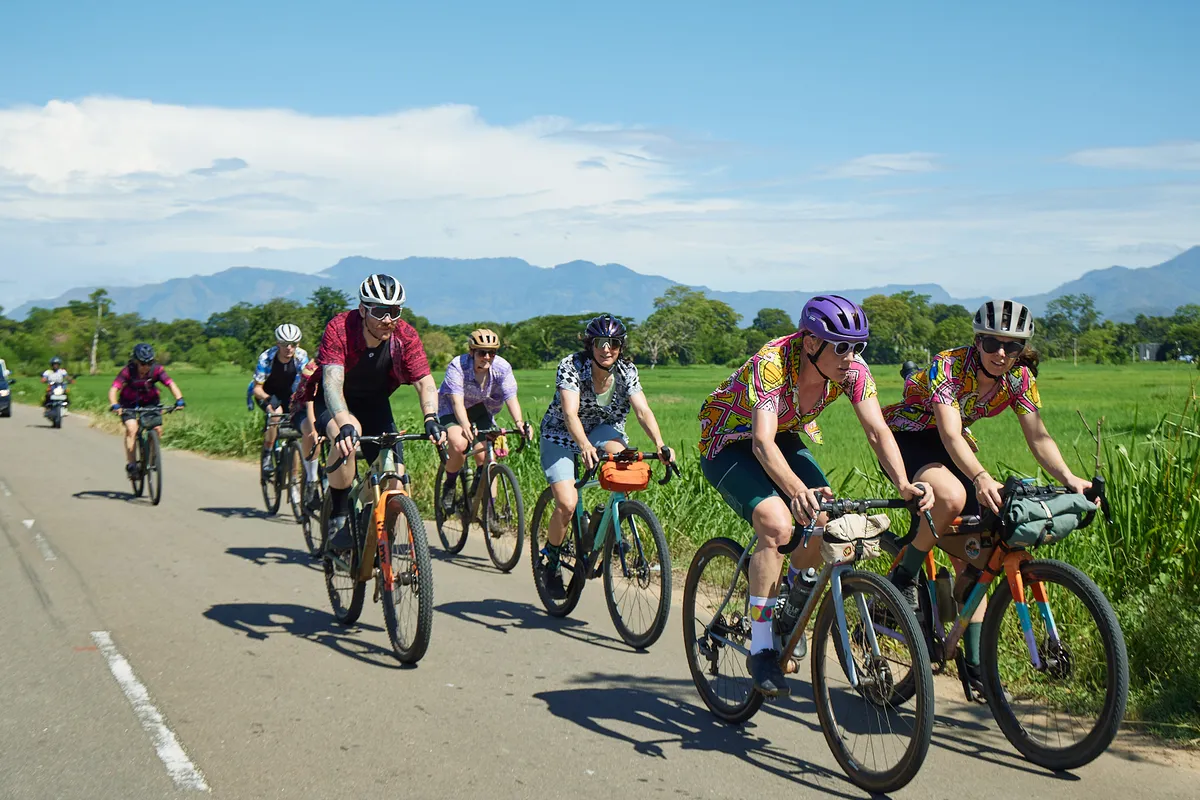
After our hefty Queen Stage up to the Riverston Pass, we spent the last two days of riding making our way back down to sea level.
There was a little more up first though, taking the four-hour train journey from Kandy up into the mountains to Ohiya on the Ella Odyssey.
Train journeys in the UK are really about getting from A to B, but this was something different entirely, soaking up the sights, sounds and smells of the changing landscape as we hung out of the open doors and windows.
Once we started cycling, the 5km climb to get up to Horton Plains National Park felt like nothing compared to the previous day’s effort, and the cool air at an altitude of 2,140 metres certainly helped. The sliver of tarmac across the high cloud forest plains wasn’t too dissimilar from riding at home, and the small herds of sambar deer are surprisingly similar to Dartmoor’s red cousins.
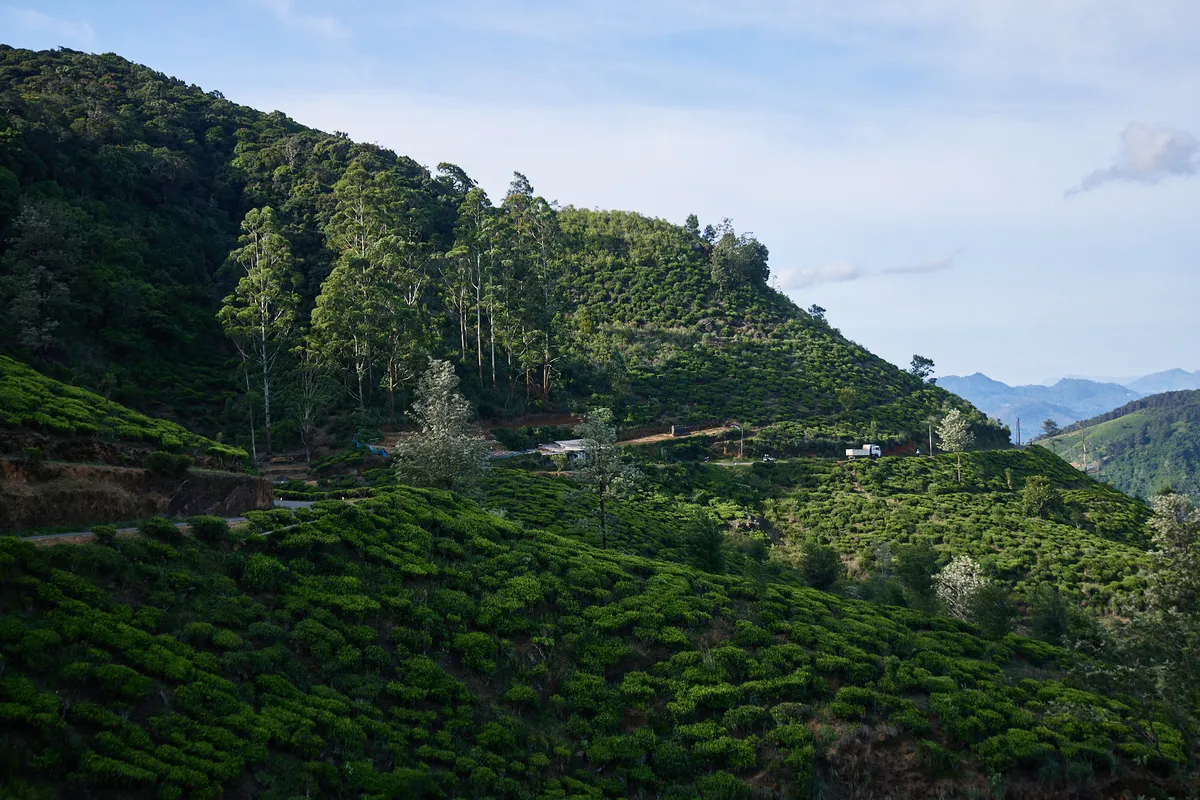
After riding through the national park, it was almost all downhill. Rough, sandy switchbacks came first. Monkeys perched on the hairpins, taking in the sight of nearly a dozen cyclists whizzing past.
As we dropped down a little, a smooth, singletrack tarmac road was cut into the side of the hill, providing the most spectacular descent. Tea plantations were cultivated on terraces beside us and the mountains opposite, while small-scale farms grew vegetables in the sculpted earth.
Having started our ride at midday, this was the first time we experienced riding into dusk. Sunset is surprisingly early and fast in Sri Lanka at around 6.30pm, so we were racing the clock to descend off the mountain and through the towns before darkness. There was something so wonderful about riding into the fading light, especially as we took the main road through the urban areas, overtaking tuk-tuks and buses on the descent.
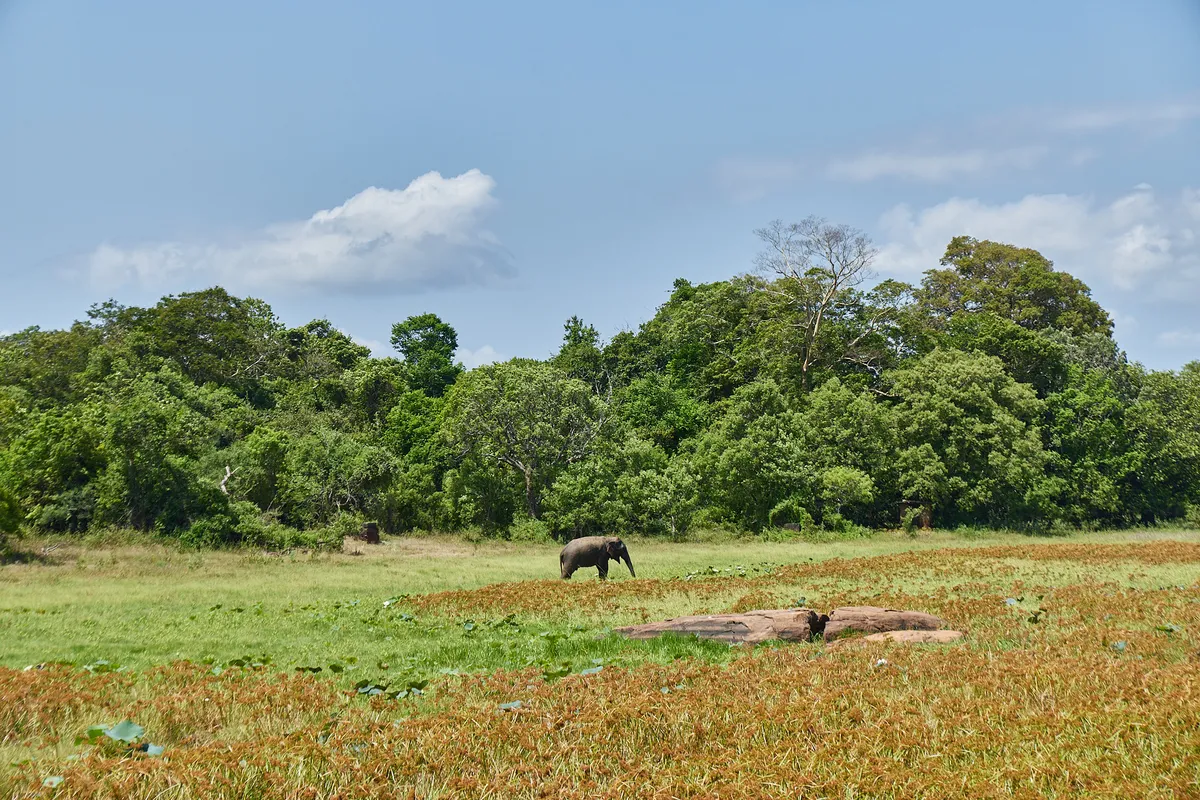
After a night staying on a campsite just outside of Ella, our final day of riding took us back down to the coastal plains to the south. My legs were sore by now, tired from the accumulated effort of the previous four days, so I was mightily relieved to start with a long, twisting road descent.
Dropping back down to sea level brought the humidity way back up. When we stopped in the blazing sun, I was sweating even more than before. Keeping pedalling on the flat back road was the best option, with our final-day silk party shirts flapping in the breeze.
With just a few kilometres left to ride, we entered Yala National Park and met the rangers. Cycling through here was forbidden, due to the large population of wild elephants, but we were permitted through with a ranger chaperone.
Told that there were elephants in the road up ahead, we proceeded eagerly, hoping we’d get close enough to catch a good look at them, but not so close that we’d be put in danger.
Sure enough, we came across three elephants on the road. Each time, the rangers ushered them back into the bush so we could safely pass.
I get excited about all kinds of wildlife when cycling, but this was something else entirely. I had goosebumps all over my body.
Just as we came to the end of our ride out of the park, I spied an enormous raptor above us, circling. As if the elephants weren’t enough, we were now being stalked by a white-bellied sea eagle.
Weighing it up
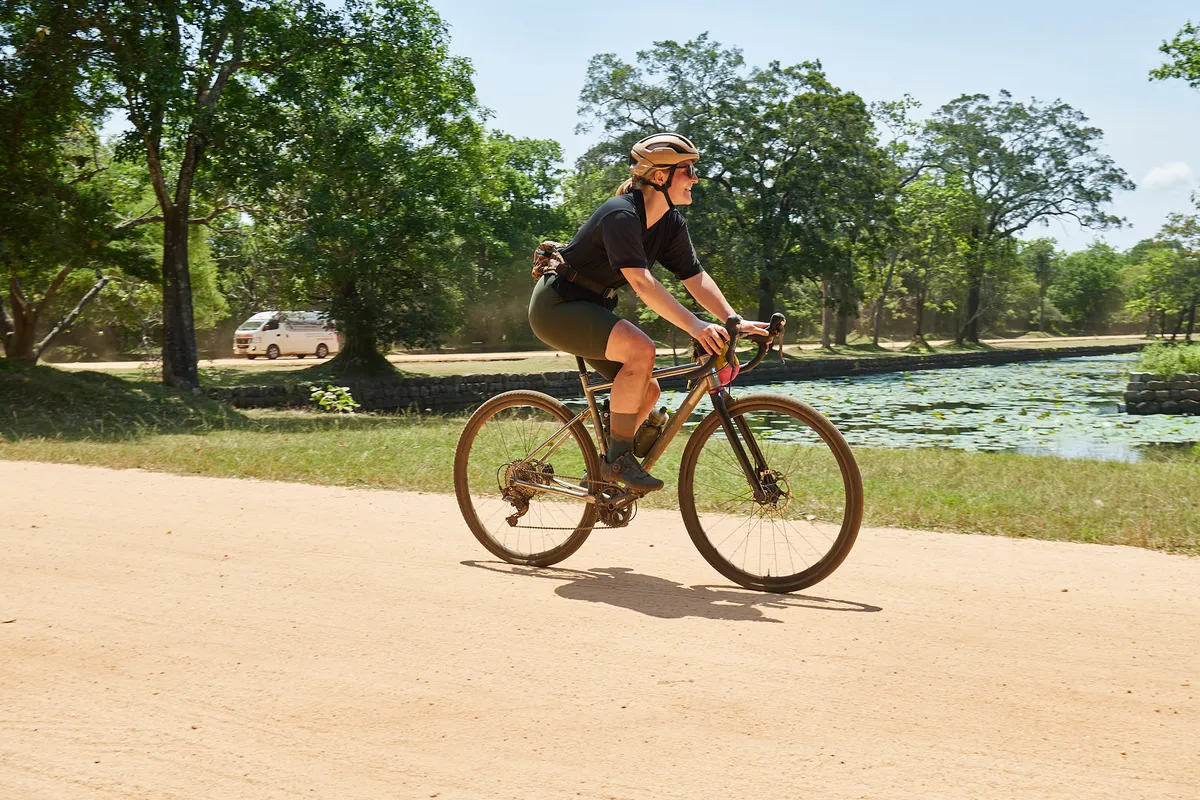
450 kilometres of Sri Lankan red dirt, unfinished roads, broken tarmac and silky asphalt later, had I made the right decision for my Sri Lankan rig?
On the whole, I certainly think so. The Ribble CGR Ti took up gravel duties with ease, with the Schwalbe G-One Overland tyres taking the wide variety of terrain in their stride beautifully.
There had been a lot more road riding than I had anticipated, which was very enjoyable, so I was glad to have kitted the bike out with tyres that still feel sprightly and roll well on tarmac.
The switch to Shimano GRX RX800 had been a wise one, though I certainly wouldn’t think twice about opting for an even wider gear range next time.
I was really impressed by the CGR’s versatility, though in reality switching groupsets between rides isn’t exactly practical. Having said that, a 2x GRX RX800 might be the perfect sweet spot for my usual hilly road rides on Dartmoor and a good helping of gravel too.
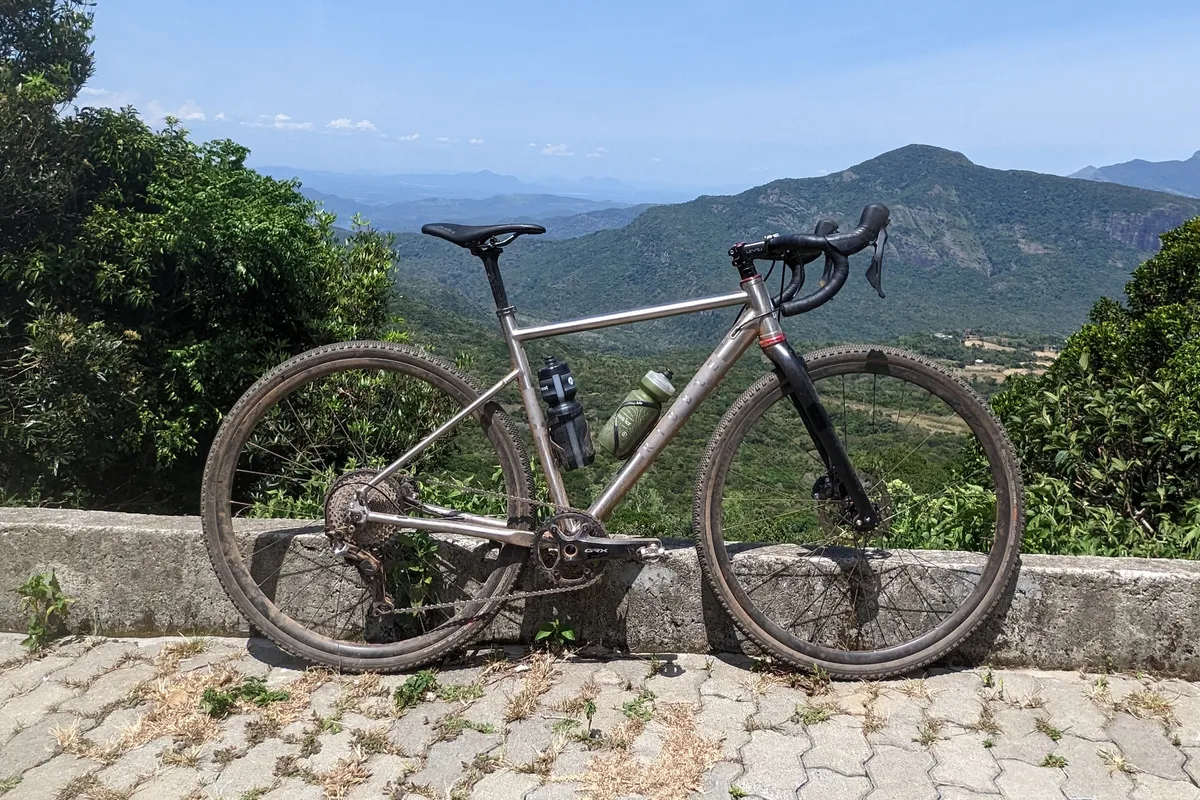
Even if you were planning on sticking to the roads in Sri Lanka, a gravel bike would be perfect for the steeper ascents into the mountains. Wider gravel tyres would also be a wise choice for broken roads, though those are certainly not as common as the smooth tarmac.
The salty sea air and high humidity got me thinking about how the inert titanium frame was a good choice, too, rather than bringing my steel gravel bike. The rust on the Ribble’s chain after only a few days was a testament to the conditions.
If I were to return and ride unsupported, I think my most pressing consideration would be carrying enough water, especially in more remote, mountainous parts. You need to drink a lot to combat sweat loss in the hot, humid environment. Most hotels and restaurants had filtered water, which was safe enough to drink.
As for cycling in Sri Lanka, it proved to be an adventure like no other. After our trip, I was inundated with pictures of the guiding team checking out glorious gravel tracks all over the island, spurred on by our enthusiasm for riding there. A fire has certainly been lit. Watch this space.
